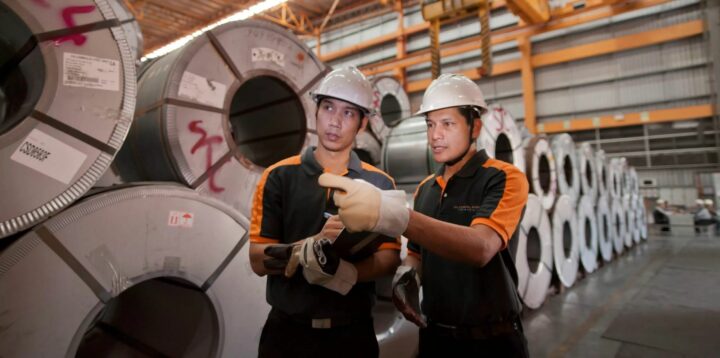Container shipping has gained popularity in recent years due to its cost-effectiveness and the ability to transport goods for long distances, expanding international supply chains. It involves the transportation of cargo in metal boxes of different sizes and dimensions, protected from potential threats or damages. Globalink Logistics understands the importance of reliable container shipping services for businesses; hence, today’s post on container shipping and how it works for persons, firms, and/or businesses.
What are shipping containers?

Shipping containers, also called intermodal containers or ISO containers, are large boxes made to transport goods by sea, land, or air. They are usually made from industrial-strength aluminum or steel and can endure harsh weather conditions or rough handling during transit to ensure the cargo inside stays safe.
They also have built-in security features, such as lock boxes and tamper-proof seals, to prevent potential damage or theft.
Shipping containers are also incredibly sustainable and cost-effective, as they can be used repeatedly over long periods, as well as recycled or repurposed.
Types of shipping containers
Types of shipping containers vary depending on the type of cargo being transported:
- The standard containers, available in 20 and 40-foot sizes, are the most prevalent. They are frequently used for transporting dry goods.
- Open-top and flat rack containers are specifically designed to carry oversized cargo that cannot be transported in standard containers. The open top allows for loading from above, while the flat rack has collapsible sides for easy loading and unloading.
- Refrigerated containers, often referred to as “reefers”, are temperature-controlled and are ideal for transporting perishable goods like fruits, vegetables, and meat.
- Tank containers are utilized for the transportation of liquid commodities, such as chemicals or fuels.
When choosing a shipping container, consider the dimensions of your cargo, whether it is hazardous or needs special conditions, such as temperature control, and other factors.
The steps of container shipping

Container shipping requires taking several measures to ensure the goods are transported from one location to another efficiently. This overall process usually takes several steps:
- Booking the shipment and submitting information about the cargo, including its weight, dimensions, and type of goods, as well as the origin and destination port.
- Preparing the cargo. This involves carefully packing the goods into containers and ensuring that they’re tightly secured to avoid any transportation damage.
- Container loading. Subsequently, the packed containers get loaded onto the shipping vessel using cranes at the port.
- Shipping documentation. All necessary documents, such as the Bill of Lading and customs declarations, are prepared and submitted by the freight forwarder or shipper.
- Transportation. The ship then transports the containers to the destination port. This can take anywhere from a few days to several weeks, depending on the distance.
- Port arrival and customs clearance. Upon arrival at the destination port, the containers pass through customs for clearance. Any owed duties or taxes are to be paid at this time.
- Container unloading. After customs clearance, the containers are unloaded from the ship. They’re then either picked up by the consignee or transported to a warehouse.
- Delivery to a final destination. Finally, the containers are delivered to the final destination, where they’re unpacked, and the goods are distributed.
However, the exact shipment process can differ based on factors, such as the shipping line used, the type of goods shipped, and the customs laws of both the country of origin and the destination. If you want to know more about the various nuances of container shipping, contact Globalink Logistics, a trustworthy transport and logistics company.
Along with professional assistance, the company offers a wide range of other services, from air, sea, rail, and road local and international freight transportation to numerous countries and regions to project and contract logistics, as well as value-added services, such as customs brokerage and cargo insurance.

















